Apple variety Aport
Aport is the oldest apple variety in the world with early winter ripening fruits. Despite the worldwide fame and long history of development, its exact origin is still unknown. Most pomologists agree that Aport has Ukrainian roots. It has been established that the first mention of this apple tree dates back to 1175. In the monastery records of that time, a new variety of apples was described, brought from the city of Porta (Ottoman Empire) to the Kingdom of Poland, where it was a success and after that it became widespread. But it is also reliably known that this apple tree was grown in the 12th century and on the territory of Ukraine. A less common version is that the variety comes from Turkey.
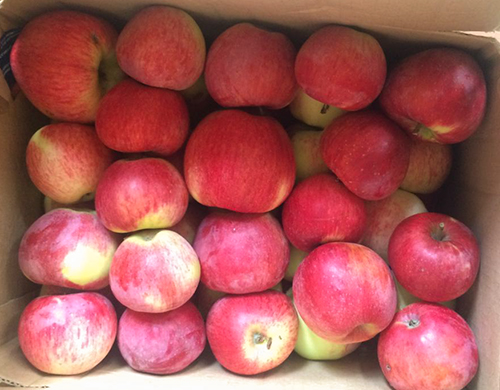
Based on the latest genetic studies carried out by British pomologists in the 2000s, it has been established that the ancestor of the Aport fruits is the wild Sievers apple tree.
Regarding the distribution of this variety in our country: the first Russian breeder and variety scientist Bolotov, who studied and described 500 varieties of apple trees, made notes in 1779 that Aport has been known for a long time and is often found in Russian gardens located in the southern and middle zone of the state.
At the beginning of the 19th century, this apple tree was brought to Germany (where it took root under the name "Russian Emperor Alexander"), Belgium, France ("King of Beauty", "President Napoleon"). In 1817, one of the Aport clones became widespread in England under the name "Alexander" (in honor of the Russian Emperor Alexander I). Under the same name, the variety has taken root in the United States and Canada. At the World's Fair, held in Paris in 1900, Aport was exhibited by several countries (including France and the USA) as one of the top ten varieties for commercial cultivation.
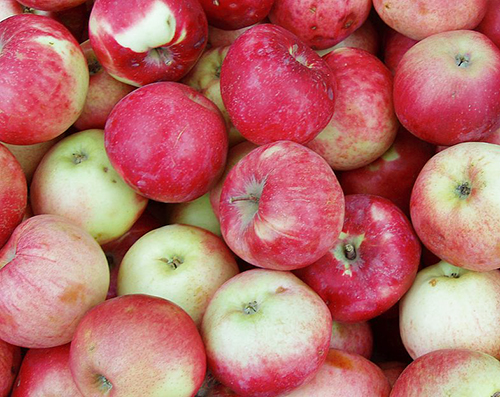
The story of the appearance of this apple tree on the Trans-Ili land, in the Kazakh city of Alma-Ata, is interesting. Previously, the city was named Verny. So, in 1865, several Aport saplings were brought here by an immigrant from the Ostrogozhsky district of the Voronezh province, the bourgeoisie Yegor Redko. It is worth noting that the variety did not stand out in its former homeland. But what a surprise it was when, on the new land, several years after grafting into the local wildfowl, huge bright red miracle apples (weighing about 400 grams each) with an amazing taste grew on young trees. The generous owner began to willingly distribute cuttings to admiring neighbors, after which the apple tree quickly spread in the local area. The people then called the variety Redkovsky apple, but this name never caught on. But outside the city of Verny, thanks to these apples, the glory of the fruit center has been fixed for a long time. At the Mannheim International Exhibition, held in Germany in 1908, unprecedented fruits from the Vernensky School of Horticulture received the highest rating from the experts.
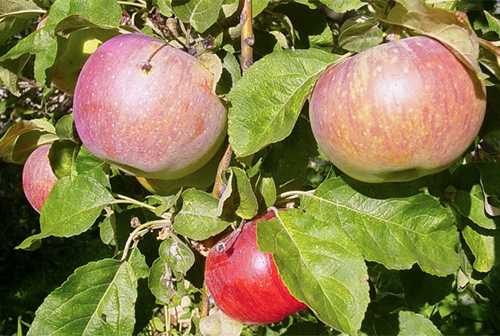
Vernensky, or Alma-Atinsky, Aport, which became one of the varieties of this variety, truly became the symbol of Alma-Ata in the 70s of the last century. All the guests of the city and the Almaty residents themselves considered it a sacred duty to bring the miracle apples as a gift to all their relatives, friends and acquaintances. Fortunately, everyone could buy fruits weighing 500 - 600 grams in the capital market without any problems. In addition, the fruits of the Aport were supplied on a regular basis from the Republic of Kazakhstan to Moscow to the Kremlin for consumption by the top officials of the state.
However, it should be noted that Alma-Ata Aport is rather capricious. The frequency of its fruiting and the quality of the fruit is significantly influenced by numerous conditions: weather, insect pests, feeding, etc. To grow it requires a lot of effort and work. Moreover, even on fertile soil, the first fruiting can occur only after 15 years. The mountainous terrain is recognized as the most successful place for cultivating this apple tree - these are certain slopes, a narrow strip in the range from 900 to 1200 meters above sea level.If the trees are planted below, the apples will overripe; if higher, then the fruits do not gain enough sugars.

Unfortunately, the modern generation of Almaty residents can judge the excellent qualities of those apples only by the enthusiastic stories of the older generation. The old variety continues to be cultivated by dedicated pomologists only in specialized nurseries. In memory of Alma-Ata Aport, the National Bank of the Republic of Kazakhstan issued on April 18, 2009 commemorative silver coins of 500 tenge denomination.
This apple tree has many other different clones, named after local or varietal characteristics. In addition to Aport Alexander and Aport Alma-Atinsky, these are: Aport blood-red, Aport white, Aport pink, Aport brilliant, Aport huge, Ukrainian Aport (red), etc. The main differences are associated with the cover color and taste of fruits, frost resistance.
Below is a general description of the Aport (Alexandra Aport).
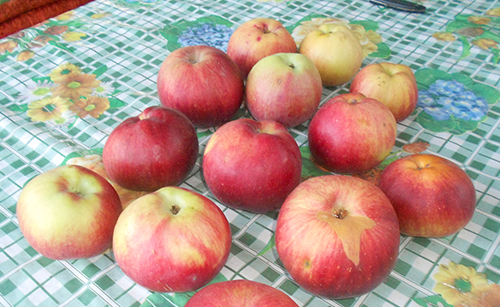
Trees are tall, the crown is quite flat, not thickened, wide-rounded. Fruiting is concentrated on fruit twigs and alternating ringlets.
In appearance, the fruits of the Aport apple tree are unusually beautiful and are distinguished by their large and very large size. The average weight of one apple is 200 - 260 g, but the weight of individual fruits can reach up to 500 - 900 g. The apples are flattened-conical in shape, on some fruits a slight ribbing is noticeable. The main color of the fruit is yellow or green-yellow, the integumentary color is expressed in the form of a dark red streaky blush and occupies about ½ of the apple surface. The skin is of medium thickness, with a glossy sheen, oily, rather dense, slightly rough, with rare cutaneous dots, there is a waxy coating. The subcutaneous punctures are large, numerous, clearly visible, white or pale green in color.
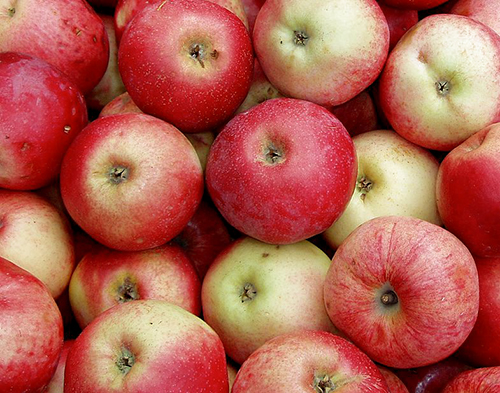
The pulp is white, with a light greenish-yellow (light green) shade, medium density, fine-grained structure, the taste is crumbly, very tender, sweet-sour (wine-sweet-sour), with a pleasant light aroma. In addition to fresh consumption, apples are excellent for technical processing into juices, wine, marmalade, jams, marmalades, preserves and the manufacture of dried fruits (the pulp does not turn brown).
The period of removable ripeness of fruits in the conditions of Central Russia falls on the second decade of September. The consumption period begins one month after collection. Usually, when stored in the refrigerator, the fruits retain their freshness and taste until the end of January - early February. The maximum shelf life for apples is 6 months. The transportability of the variety is good.
Apple trees begin to bear fruit after 6 - 7 years. Also, the variety is prone to irregular fruiting (often after a year). The yield is quite high, the average is 135 - 140 kg of fruits from one tree.
In the conditions of the southern zone of Russia, frost resistance is quite high, but in the conditions of the middle zone it is only moderate. The resistance of trees to scab is average. Fruit can also be affected by fruit rot.
In modern industrial gardens, Aport has almost completely supplanted new varieties of apple trees. But for amateur gardeners - this is one of the most desirable varieties, the interest in which will remain, apparently, for a long time.
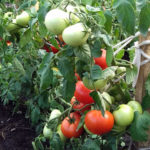
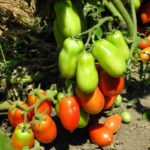
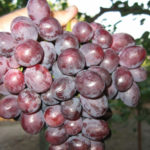
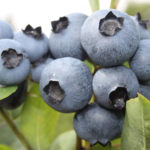
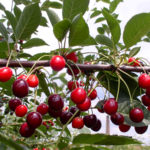




What kind of apples are these to taste, I wonder? I want to plant next year. Can anyone suggest? Sweet and sour, rich? Or something like Streyfling - then it is not necessary. The same, if the type of Zvezdochka or Anis, Pepin - also not necessary.Maybe someone knows?
Very aromatic and sweet. I have never met apples with such a rich aroma.
These are the most delicious apples in the world. You can plant a tree at home, now this variety is zoned. But! Big but. The taste will not be created. It all depends on the climatic conditions of Kazakhstan, as well as Kyrgyzstan. A mountainous climate is required. It contributes to the unmatched taste of these apples!
Plant without hesitation. The incomparable taste of apples. But keep in mind that the Aport apple tree is a very voluminous and large tree.
I also planted 3 apple trees last year in my village in Kasimov, Ryazan region. As a child, I lived in Kazakhstan for many years and I agree that Aport is the best apples in the world! So fragrant, juicy, sweet and sour taste. But I remember that when these apples were harvested, the whole house was filled with an unimaginable aroma ... I planted a blood-red Aport variety for myself, but so far nothing has grown on it, the trees are small ... cold, so I was delighted when I found a zoned clone.